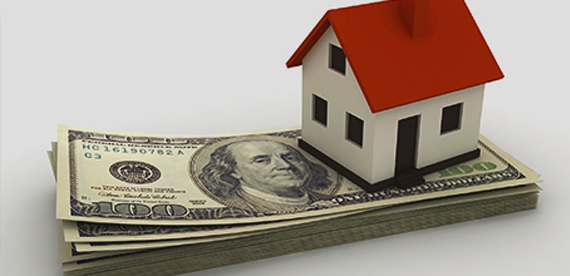What is a 1031 Exchange?
A 1031 Exchange is a way of selling property with the possibility of deferring or eliminating income tax by purchasing a property of a like-kind after the sale of their original property. This sort of swap is outlined in section 1031 of the Internal Revenue Code. A 1031 transaction can be very beneficial, but as it is a very technical proposition, you should consult a 1031 exchange specialist if you are interested in pursuing one.
1031 Exchange Basics
In a 1031 Exchange, the taxpayer who is selling the initial property must be the same taxpayer that buys the new one. This taxpayer may be an individual, a corporation, partnership, trust, or limited liability company, but regardless, it must be the same taxpayer in both transactions.
One exception does exist, for properties which are held in a sole member disregarded limited liability company. In a 1031 Exchange involving these properties, the property is treated as that of the sole member. For example, a single taxpayer may sell property that was held in his own name, and then purchase property into a disregarded limited liability company in which the taxpayer is the sole member.
One of the main pillars of a 1031 Exchange is that the two properties involved in the transaction must be of “like-kind.†However, the rules defining what is kind of real estate is defined as “like-kind†are fairly broad.
For those exchanging real property in a 1031 Exchange, there is some leeway. For example, a taxpayer may sell a vacant lot or land, and then buy retail space. One regulation, however, is none of the properties used may be treated as inventory for tax purposes (for example: subdivided lots).
For those hoping to exchange personal property in a 1031 Exchange, the rules defining a like-kind are much more strict. First off, only personal property that can be depreciated for tax purposes can qualify for the exchange. That means that stocks, bonds, and other non-tangible assets cannot be the used in a 1031 Exchange. Secondly, because a like-kind is so strictly defined, you may only buy the same type of property that you sell. For example, if you sell a helicopter, under the rules of a 1031 Exchange with personal property, you may only buy another helicopter, not another piece of real estate or machinery.
It’s important to note that property bought or sold in a 1031 Exchange must be used by the tax payer for business or investment purposes, not personal use.
A qualified intermediary is extremely important in crafting a successful 1031 Exchange, and should be retained by the taxpayer before they sell or buy any of the property that might be used in the exchange. A 1031 expert will help you with drafting up all the necessary documents for the exchange, and helping answer any questions you have. Most importantly, the taxpayer assigns the right to sell their current property, as well as the right to buy the new property, to this intermediary, although the title will pass directly to the taxpayer.
Because of this, the sale of the existing property must happen first, so that the proceeds from the sale can be transferred to the intermediary, which will in turn be used for the purchase of the new property. Because the intermediary plays such an important role in the transaction, the taxpayer should ensure that the intermediary they hire is well insured, bonded, and has excellent references. [raw]
Timing plays a large role in a 1031 Exchange. There are two important deadlines that must be met for the exchange to be valid.
First, there is a 45 day timeline after the sale of the original property for the taxpayer to identify the new, a like-kind property that they intend to purchase. Second, the taxpayer must close on the purchase of his identified new property 180 days after the sale of the existing property and the due date for filing the federal tax return for the year in which the sale occured. Both time frames are rigid, and no extensions are allowed.
In order to get the full tax benefit from a 1031 Exchange, all of the money earned through the sale of the original property must be used in the purchase of the new property. It's also worth noting that if the taxpayer buys a property that is worth less than the property they sold, the shortfall can be taxed. Some taxpayers are willing to accept that there will be sales proceeds that will be taxed if they feel they have earned enough in savings, but as each case is different, it is something you should take time to consider.
Put in the simplest terms, a 1031 Exchange is a trade off. If the taxpayer sells their original property and pays the tax, they will wind up with more depreciation in the next property that they purchase because the basis from the original property did not shift over and reduce the basis in the new property as it would in a 1031 exchange. If the taxpayer had used a 1031 Exchange, the tax basis from the existing property shifts over to the new property and is increased by the difference in their values.
For Example:Existing Property Sales Price ............................... $550,000
Existing Property Tax Basis .................................. $230,000
Capital Gain + Depreciation Recapture ............. $320,000
New Property Purchase Price .............................. $750,000
A 1031 Exchange will result in the new property having an adjusted tax basis of $430,000 ($750,000 minus $320,000). Thus, the taxpayer will begin depreciating the property from $430,00 over the applicable depreciation period. If the taxpayer chooses not to use a 1031 Exchange, they will have a $750,000 tax basis, and will be depreciating from that amount. The taxpayer will then have higher depreciation deductions over time, but only at the significant cost of paying all the tax up front.
When a 1031 Exchange, the taxpayer has the use of the money that would normally be paid in tax to use towards the purchase of his new, a like-kind property. This tax deferral will stay in effect until the property is sold, and even then tax will be due only if the taxpayer does not exchange that property another a like-kind property through another 1031 Exchange. If the taxpayer holds onto the property until their death, their heirs will receive a step up in basis, which eliminates the deferred tax on the gain.
For taxpayers that cannot complete a straightforward 1031 Exchange, a reverse exchange allows for them to gain the same tax benefit they would from a regular 1031 Exchange.
In a reverse exchange, an exchange accommodation titleholder (EAT) is brought in to hold title to either the taxpayer's existing property or the new property for a period of up to 180 days. In this way, the taxpayer can continue to control both properties without holding the legal title to both at the same time, until a third party buyer is located to purchase the original property. If the third party purchases the original property from the taxpayer (through the EAT) within the 180 day period, the 1031 Exchange will be complete, and the taxpayer will receive the benefit of having their tax liability deferred.
While this is a general outline of 1031 Exchanges, it is by no means complete. A 1031 Exchange is a complex transaction that must be handled with great detail and care, so if you're interested in pursuing one, get in touch with a qualified, experienced 1031 Exchange expert to explore how it could benefit you.



